After arriving into the Faroe Islands and exploring the village of Sorvagur while staying in the Guesthouse Hugo, it was decided that we would do the day hike to the largest lake in the Faroe Islands. This was one of two day hikes we did on Vagar island, the other being to the village of Gasadalur. Vagar Island was one of 7 of the 18 Faroe Islands I visited. You can read my other posts on Kirkjubour, Gjogv and Saksun.
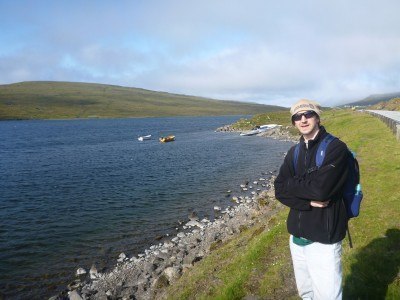
Backpacking in the Faroe Islands: Day Hike to Traelanipa, Lake Sorvagsvatn, Vagar Island
The lake is stunning, curving its way down to the cliff face from near the airport on Vagar Island. This lake is the largest in the Faroe Islands and is known as Sørvágsvatn, Vatnið and Leitisvatn. Our guide maps referred to it as Sørvágsvatn, but apparently most people call it Vatnið. I have divided the hike into the walking part and hiking parts below. On the day out we also toured Sorvagur, the area near Vagar Airport and we saw some of the villages of Vatnsoyrar and Midvagur.
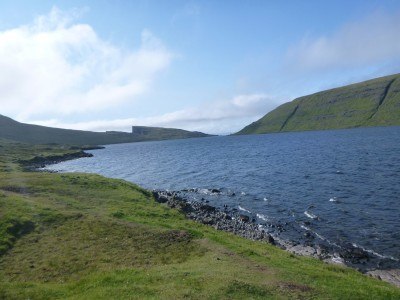
Hiking to Traelanipa
Walking from Sorvagur to Vatnsoyrar
Early morning we walked up the hill out of the village of Sorvagur. We decided just to walk all the way to the start of the actual hike. Public transport in the Faroe Islands does exist but the buses are infrequent so a stroll seemed the best idea, and we could pop into the airport for a map and information on the way. This part of the walk took no longer than 45 minutes, we arrived at Vatnsoyrar and then headed right on round the lake.
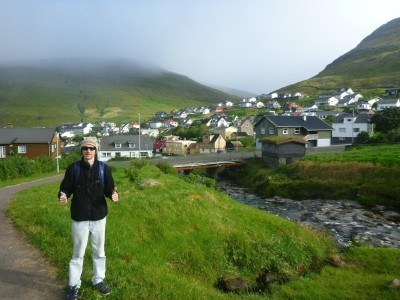
The start of the hike was out of Sorvagur
Walking from Vatnsoyrar to Midvagur
The walk round from Vatnsoyrar towards the village of Midvagur was alongside the road. There wasn’t much traffic so it is safe enough. We stayed on the right hand side all the way, and there are some wooden posts that jump you onto the lakeside on the right.
The walk curves round to the left and it is at this point that you see the village of Midvagur in front of you. Again, this took around 45 minutes I reckon and we took it easy, took photos, checked maps etc. The Lake, Sørvágsvatn is always on your right at this point.
Hiking from Midvagur past Lake Sørvágsvatn
When you can see the village of Midvagur in front of you, you need to take a right down the path. It is not obvious to start with. You will see a gate and a barrier and a path in behind it. The photo below shows where we started this part of the hike.
On the way to Traelanipa, there are a few marker points on route, the first of which was Trøllkonufingur. The path runs for a while but mostly it’s just through the grass, keeping the lake on your right. As expected in the Faroe Islands, there are lots of sheep as well.
Trøllkonufingur
Trøllkonufingur means “troll woman’s finger” and it is a high projecting rock on Sandavágur’s side. You will pass along a lot of peat bogs and remains of peat stores and your first beach is also before Trøllkonufingur.
There are a few legends and myths to learn about at Lake Sorvagsvatn. On the way from Miðvágur to Sørvágur, there was supposed to be a huldu mound. One day, a huldu woman (stone spirit) asked a priest to come inside. There were supposed to be many trolls inside. On leaving, the priest, who knew how to practise witchcraft, made sure to seal the mound so that it could not be opened again. There was said to be both moaning and wailing within. Again, I read these in the guide maps and books we had but on the walk round, it was just look and admire the scenery.
There has also been a Nix at Sorvagsvatn Lake. The Nix, which is a creature that lives in lakes, often resembles a beautiful horse. It lures people to it, grabs them and then pulls them to the bottom of the lake. It seems like soething out of the Loch Ness Monster storybooks to me, and we saw some scattered rocks coming up out of the lake, wondering if this was the mythical Nix/horse.
Here’s the full story apparently, taken from the Faroe Islands website. Once upon a time, children had gone to play by Lake Sorvagsvatn. Then a Nix came to them in the shape of a horse and they climbed on its back to play. The smallest boy, who could not get up, was frightened and called out to his brother Niklas: “Brother Nika” (he had not learned to talk yet). The Nix, thinking it to be its name being called, lost its power and disappeared, and the children were saved. The Nix loses all its power when called by name. And so it is…after this the walk continued to the end of the rock face and we encountered our first other people. We saw three other backpackers here. There really are not many people about.
There were some picnic tables on route and the odd small building.
At the end of the Lake, it stops being a still lake and flows slowly through rocks forming a massive waterfall with a huge drop into the ocean. This part of the hike makes it all worth it. We had lunch down here, you can climb up the rocks and admire.
At this point, just enjoy the views, take some photos and be careful where the waterfall drops.
Trælanípa to Bøsdalafossur
The next part of the hike is from Trælanípa (slave mountain top) to Bøsdalafossur. Trælanípa is a perpendicular rock wall, which juts 142 m straight up out of the sea. Supposedly, it its name comes from Viking Times when slaves were pushed off here. Again, be careful not to get too close to the edge, it is steep!
From here, on a clear day, you can see the southernmost part of Streymoy as well as the Faroese Islands of Hestur, Koltur, Sandoy, Skúvoy and Suðuroy. When you arrive right at the edge of Bøsdalafossur, you can see ruins from buildings that the British left behind in Vágar after World War II. We saw some ruins, but as nothing is marked and there are no tourist sign posts (or much tourist information in fact) then we are not sure we passed them.
You can cross Bøsdalaá (the water that flows from the lake to the waterfall) by using the stepping stones that have been placed in the river. Then you can walk up to a gorge, where there is a fine view of the cliff Geituskorardrangur. The cliff is called Geituskorardrangur and the waterfall is called Bøsdalafossur. I had seen some photos by a friend called Conor MacNeill, a professional photographer who was also in the Faroe Islands, the below photo is Conor’s and copyright of The Fella. I tried to find the same angle and shot, but we couldn’t. I originally thought it may have been taken from a helicopter, but Conor did the same hike as us to take this photo. The scenery here is spectacular and Conor has captured it magnificently here.
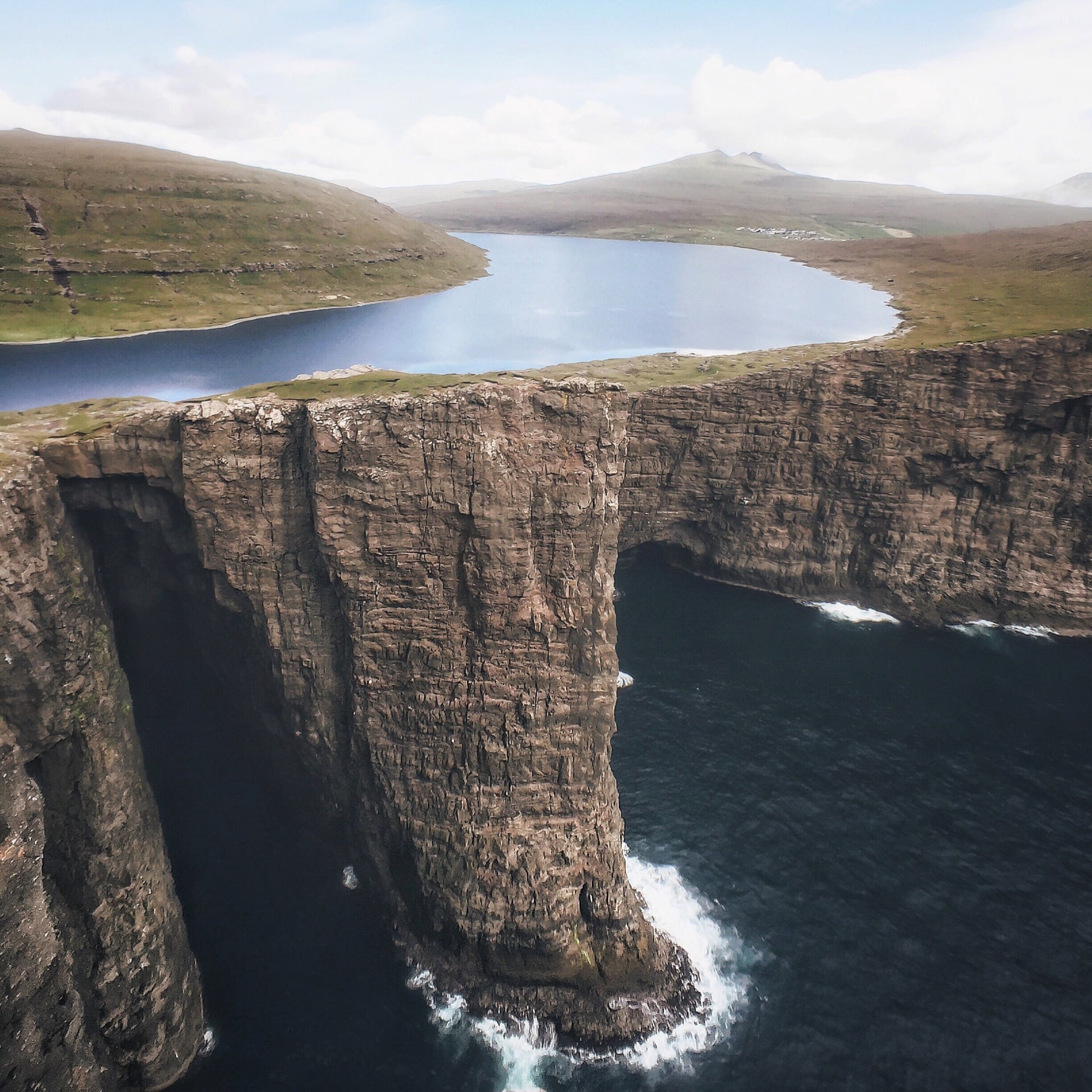
View of Sorvagsvatn by Conor MacNeill, copyright The Fella.com
You also see the bird cliffs Sørvágsbjørgini, Mykines and Mykineshólmur where I told Katie I saw some bird watchers on the cliff edges. When we looked closer, they were just shadows. To the south on a clear day, you can see the islands of Sandoy, Skúvoy and Suðuroy.
Heading back to Miðvágur
We ended up pretty much walking the same way back to Miðvágur. There were rumours of an upper path, but unless both paths were close to each other, then we didn’t find another path. It’s straight forward but it would have been nice if there was more information for tourists here.
Miðvágur
Miðvágur is a small village and it has a church, a football stadium and a museum. The museum was closed, so we went to the supermarket to buy some snacks and find out the bus times back to Sorvagur.
Luckily we only had to wait about 10 minutes and we got a bus back to our base at Sorvagur. The bus cost 20 Danish Kroner. The hike was a great day out and we recommend it highly!
I’d recommend staying in Guesthouse Hugo in Sorvagur and Hotel Foroyar in Torshavn.
Here are my videos from the day hike to Traelanipa:

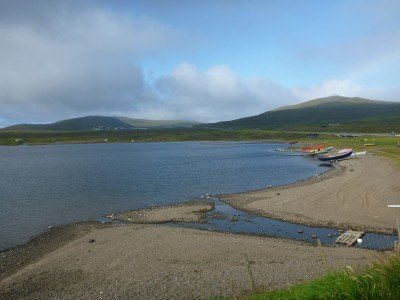

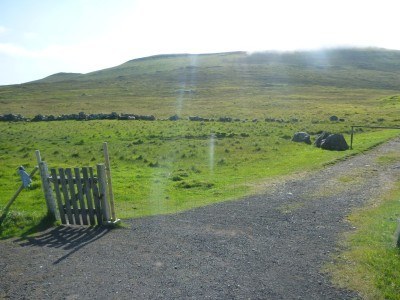


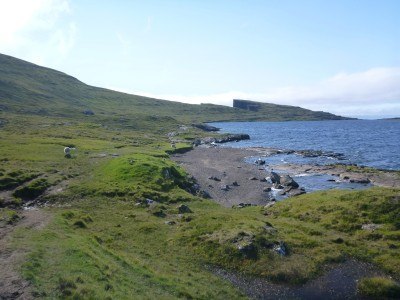
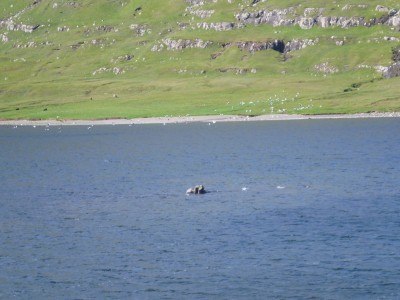


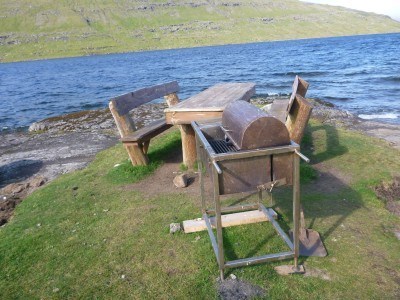
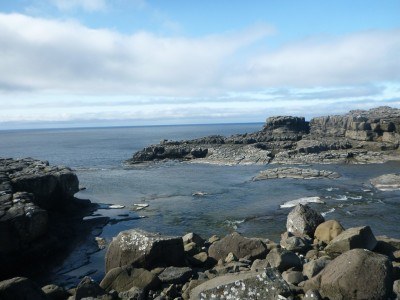
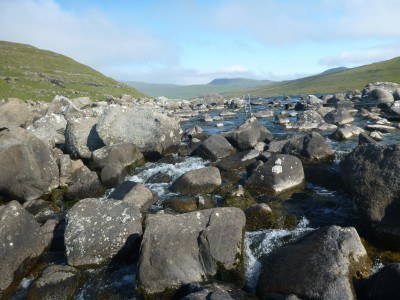
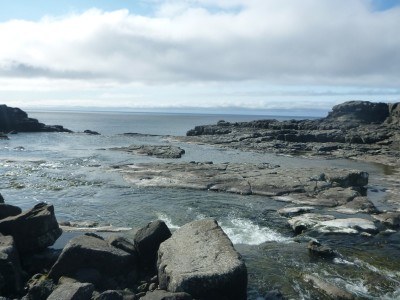
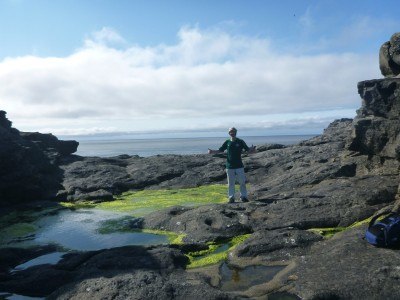
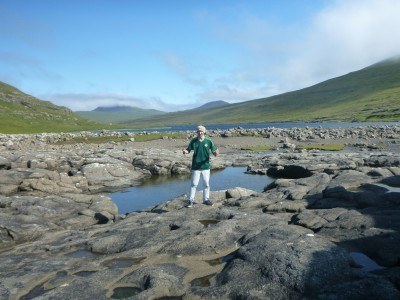
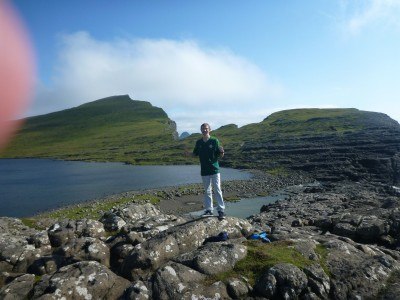
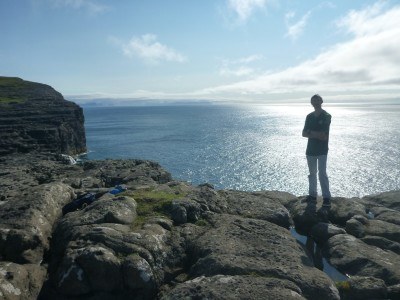
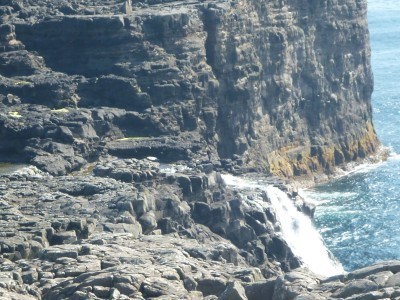
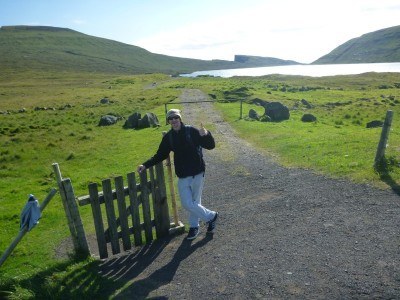
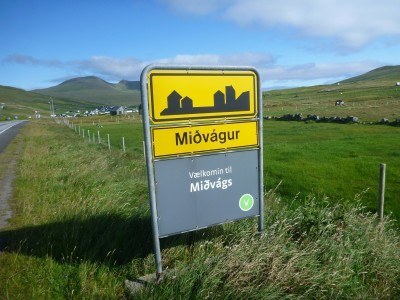
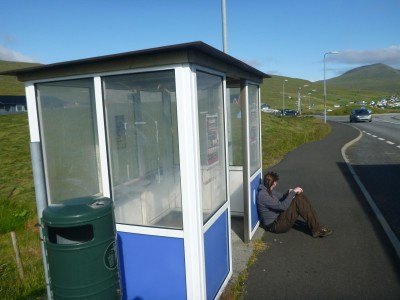
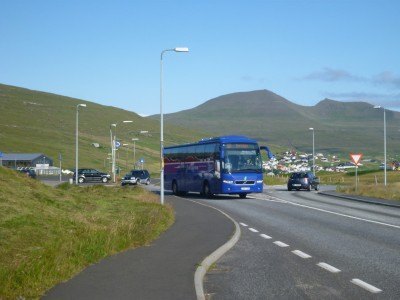

3 thoughts on “Backpacking in the Faroe Islands: Day Hike to Traelanipa, Lake Sørvágsvatn, Vagar Island”